It’s raining, and Zoe Latta is in her apartment making tea. There was a party here the night before. It was a birthday celebration for a friend, complete with cocktails and a homemade cake. It left everything in its wake shrouded in sugar.
There’s no trace of that today, though. It’s a quiet day, or as quiet as a day can be in New York City’s Chinatown, where truck horns blare, traffic is incessant, and storefronts stay lit all hours of the day and night. As Zoe pours tea, her business partner, former classmate, and close friend, Mike Eckhaus, sits on salmon-colored cushions in Zoe’s living room and watches the rain.
Together, the duo are the creative force behind Eckhaus Latta, a clothing brand known for its inventive, avant garde take on fashion and it’s use of unusual materials: fishing line, plastic, and transparent leather that warps, sweats and changes texture with the weather. Eckhaus Latta is sold worldwide, in boutiques in some of the world’s most talked-about cities: New York, of course, and Los Angeles, Portland, Tokyo, and Berlin. The clothes themselves are mystifying and artful, a captivating blend of light and dark – an apt reflection, it seems of the pair.
This portrait is part of our ongoing collaboration with ZEIT Online who present a special curation of our pictures on their site.



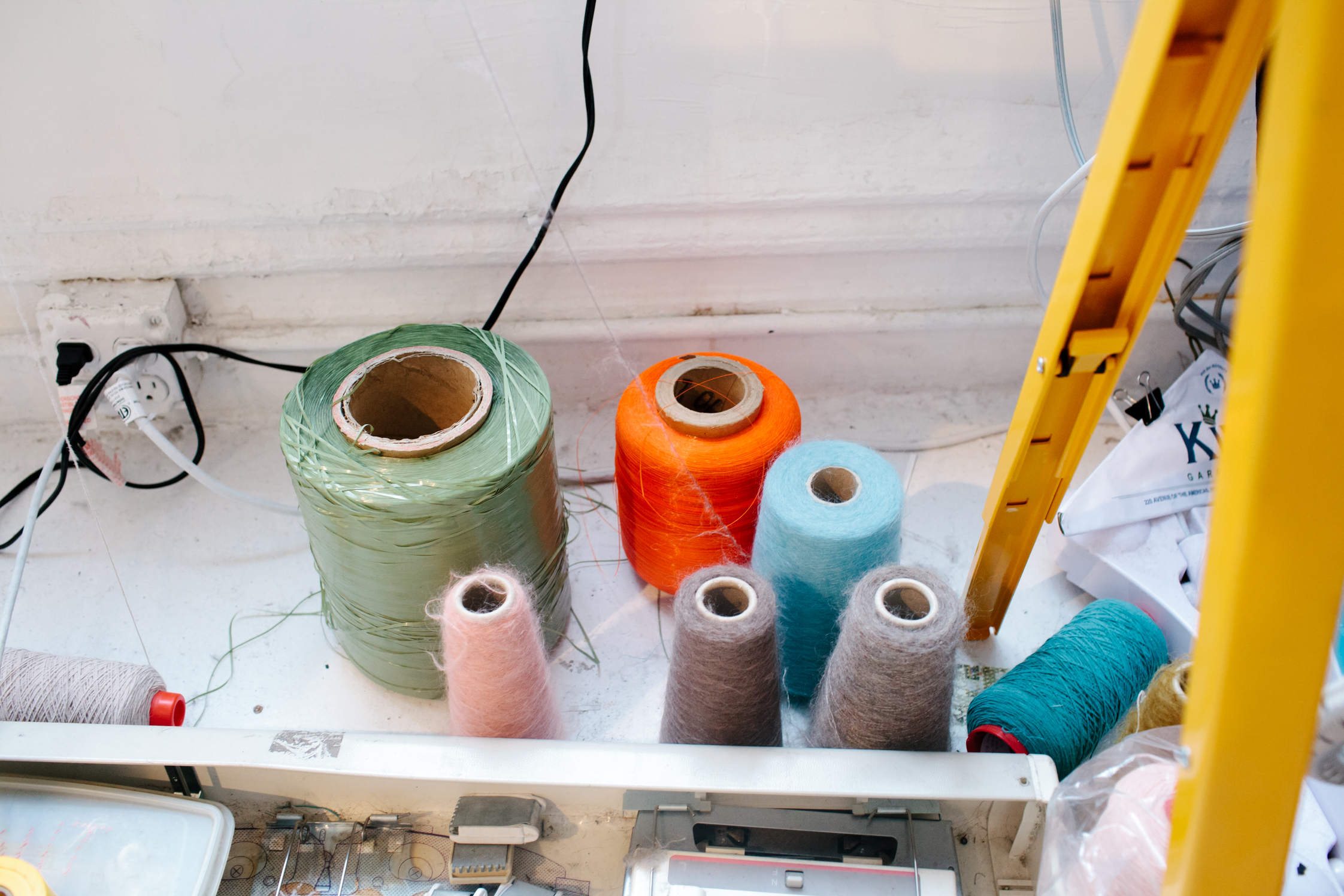


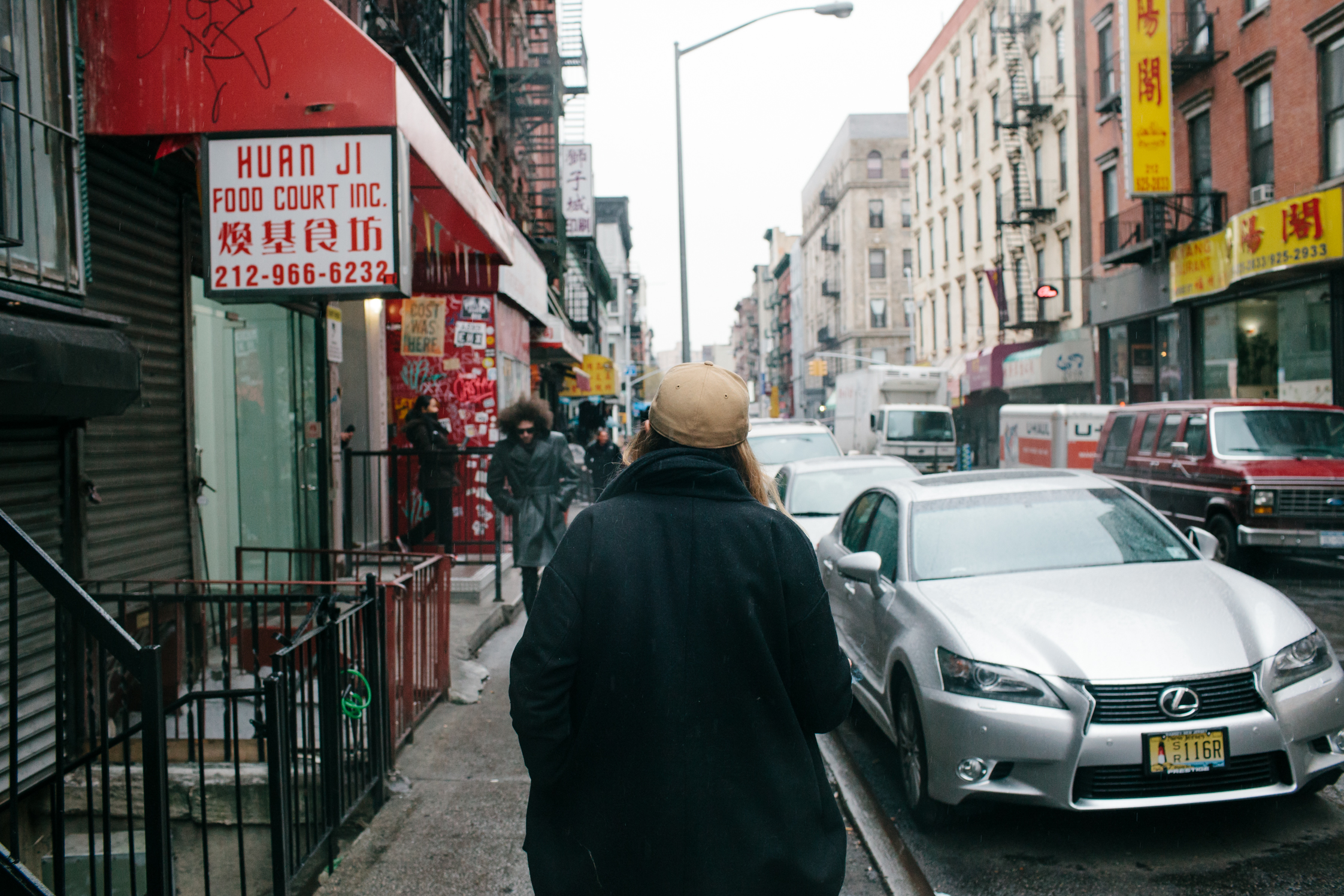


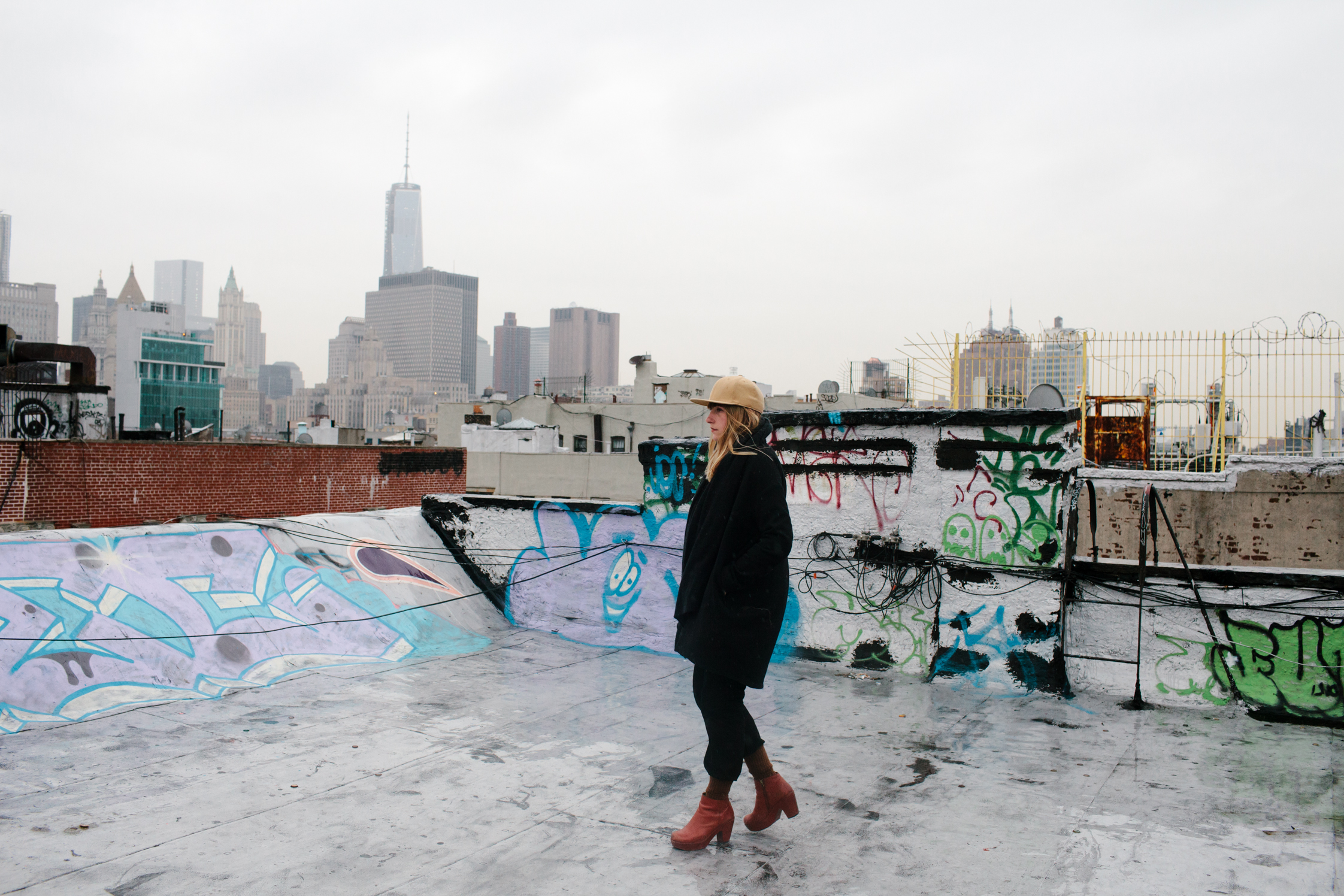










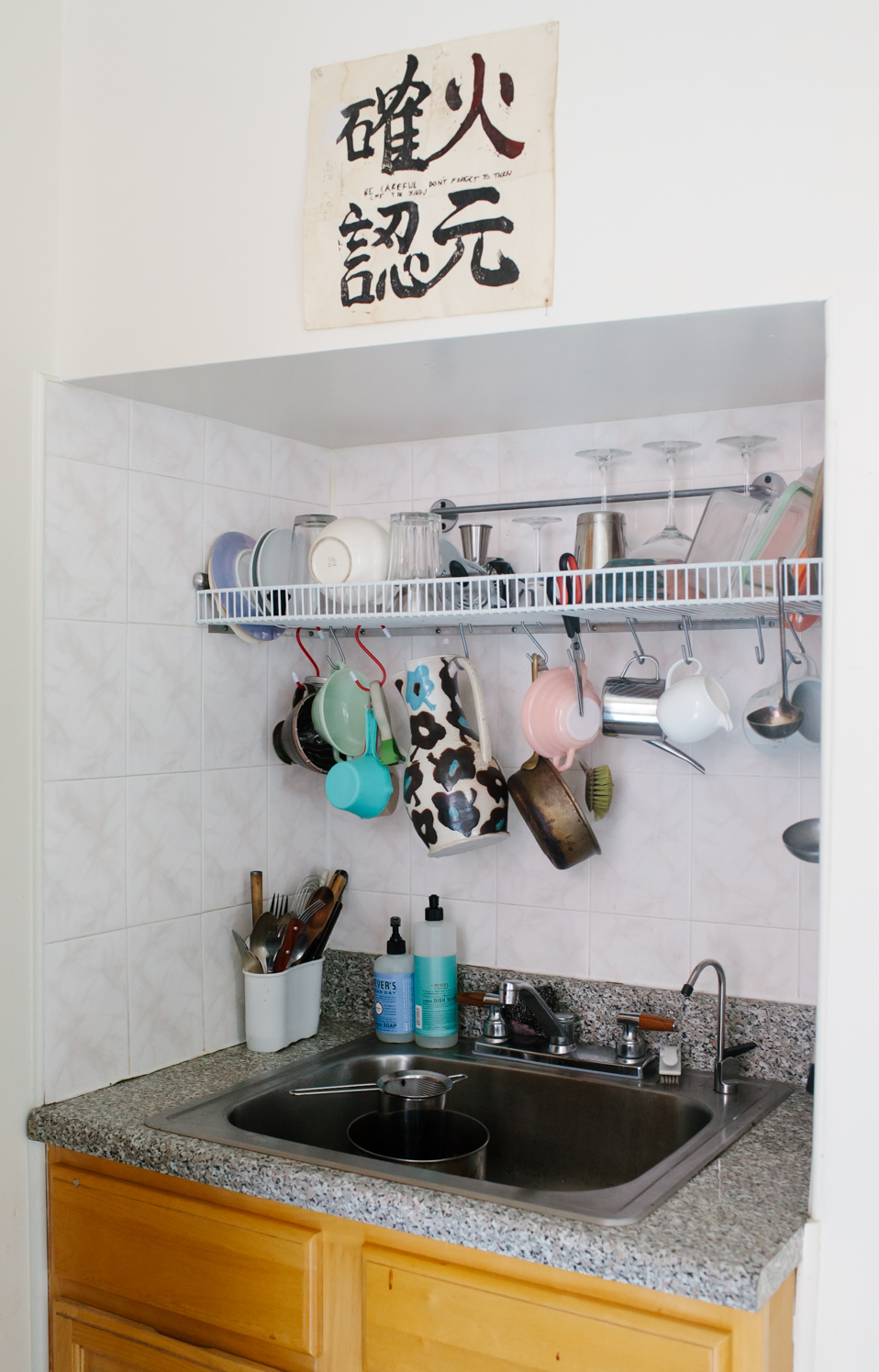


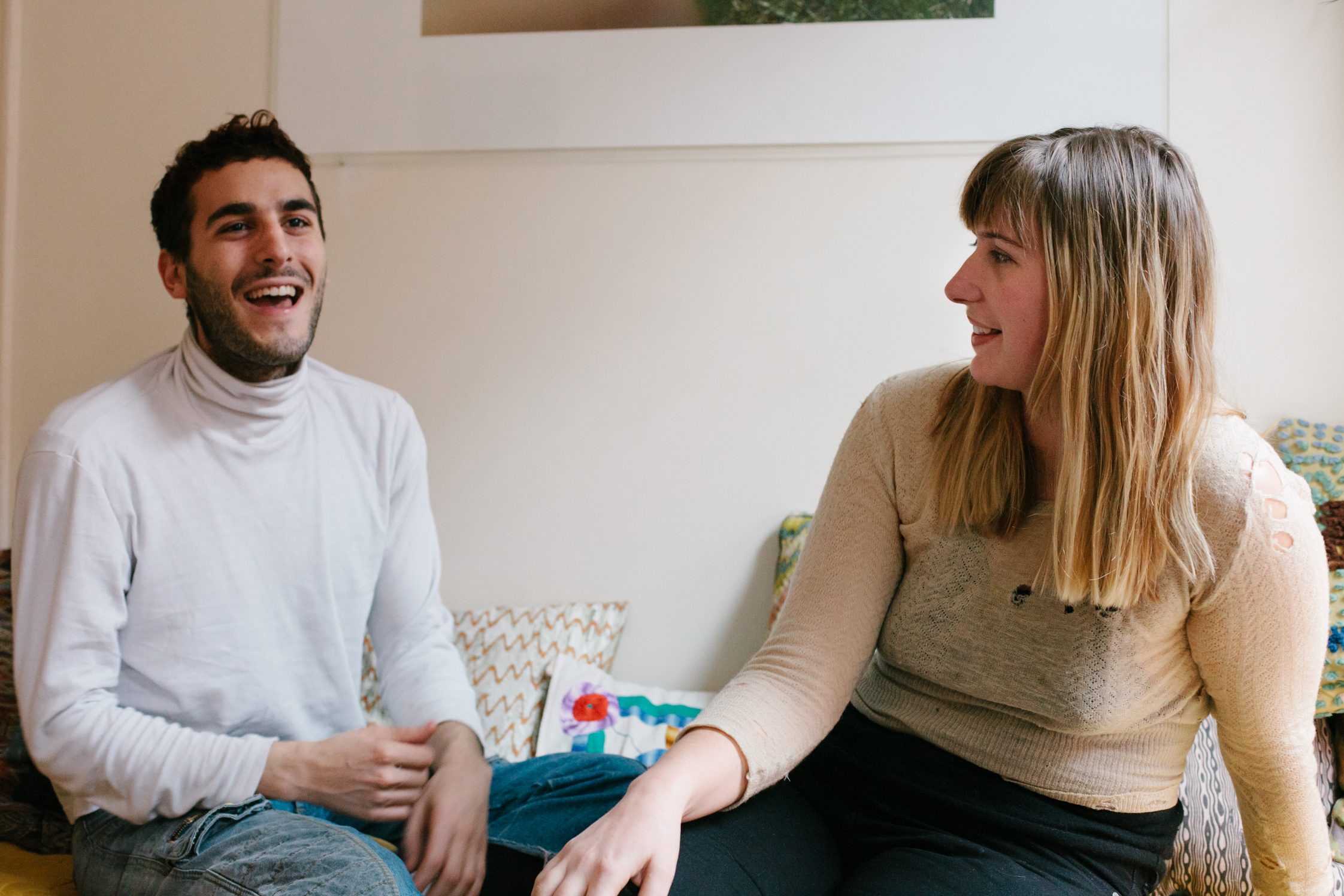
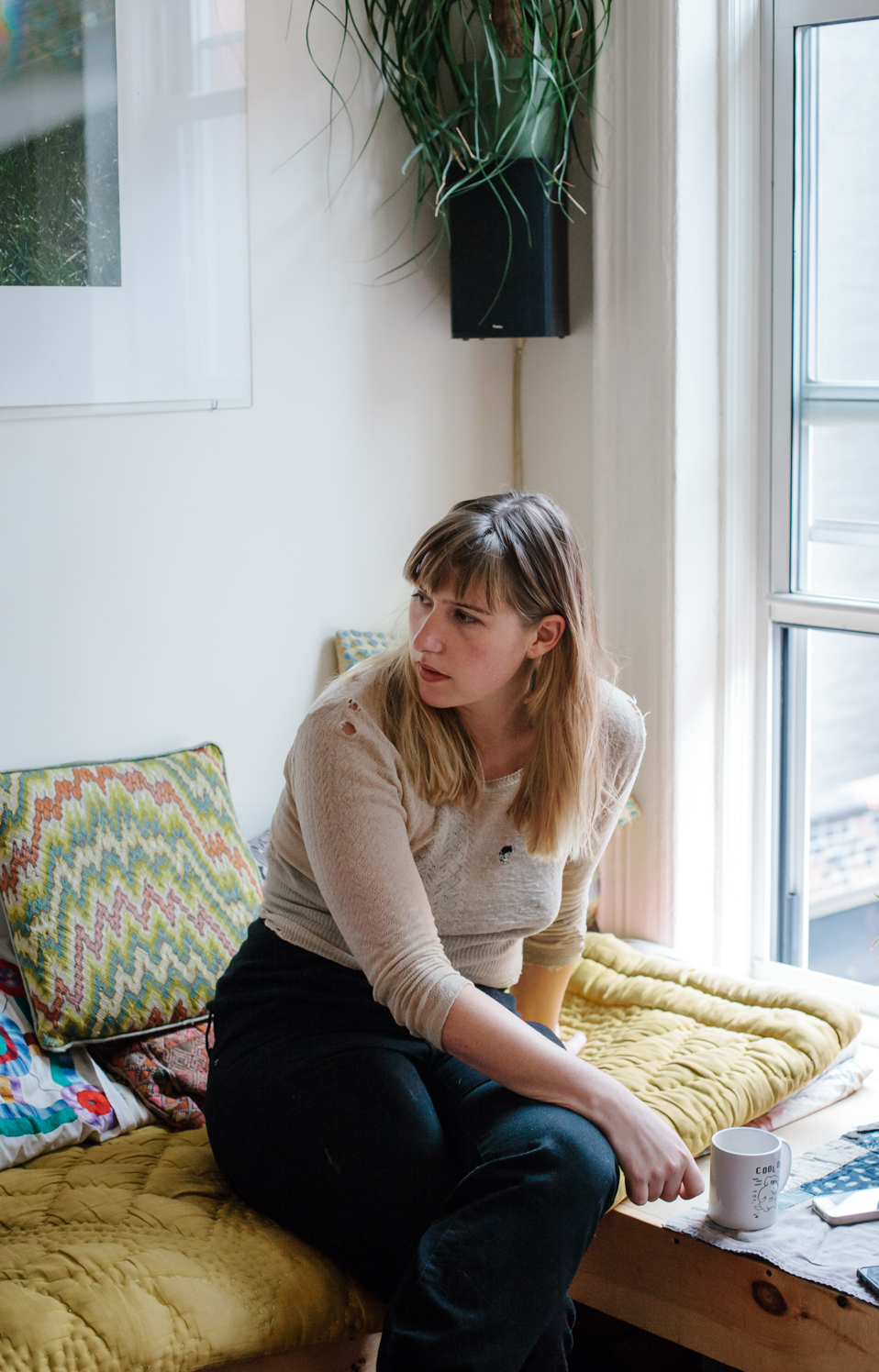









Tell us how the two of you met. Did you feel you had an instant connection?
Mike: We both went to the Rhode Island School of Design (RISD). We knew each other from afar for a while, through mutual friends.
Zoe: We always joke that we hated each other at first, but I think it was more that we were intimidated and intrigued by the other person.
Mike: When we finally met, we clicked.
Were you studying the same thing?
Mike: I studied sculpture, and Zoe did textiles. I had had an interest in fashion since high school, but I decided I was more interested at the time in studio art. I took some textile classes, and that’s when we started to work together. That’s where the conversation began.
What brought the two of you to New York, and how did Eckhaus Latta come about?
Zoe: Moving to New York – where Mike is from – was really a default thing for both of us. I had moved to the East Coast from Santa Cruz, California, and at that point, there wasn’t another place I was interested in going. When we moved here, we both got design jobs: I worked at the Met and started a textile company called Prince Ruth, and Mike was doing accessories for Marc Jacobs. We were working hard, but we were frustrated with the different market-driven practices that were a part of our day jobs. We reached a boiling point.
Mike: We were learning a lot, and there were things that were very exciting and fulfilling about what we were doing at the time, but a feeling was starting to bubble up inside. We just wanted to make our own things, but we didn’t have an outlet to do it in the way we wanted to do it.
Zoe: Neither of us knew how to make clothes. We had no formal training.
How did you learn?
Mike: Through a lot of trial and error. I did a night course at FIT to get some basic pattern-making skills, but a lot of it was intuitive. When you’re really interested in clothing, there are certain things that you just naturally understand. For the most part, both of us work very much from our gut.
Zoe: We ended up starting Eckhaus Latta in December of 2011. Our first show was in February of 2012.
What’s the evolution of the brand been like over the course of its two years?
Zoe: I think we’ve gotten a lot better. Our process has always been very intuitive and we want to stay true to who we are, but there are realities in fashion that we’ve had to face in terms of business and manufacturing. We’ve made so many mistakes that we’ve learned from. Whether it’s the way we put together a show, or how we deal with PR, or how we finish a seam.
Where do you draw creative inspiration from?
Zoe: We always have a hard time answering that question. So much of fashion is about defining that, and we intentionally choose to be inspired by the ineffable. Calling it something takes away from that.
Mike: We love materials, as silly as that sounds.
What materials in particular? Do you have favorites to work with?
Zoe: We’re always on the hunt. Sourcing materials is really exciting, and we never source in a conventional way. We don’t go to fabric stores. It’s always close-out materials or stuff from hardware stores.
Mike: I don’t have a favorite material, but I love plastics and I hate plastics. It’s one of those things, figuring out how to use challenging materials. We also like to use things we come across in our day-to-day lives.
Who do you imagine as the Eckhaus Latta customer?
Mike: I don’t think the Eckhaus Latta customer falls into any specific age demographic. I think our customers span both genders and could be anywhere between the age of 14 and 70.
Zoe: Which is really thrilling to us.
Mike: Designer clothing is not a necessary purchase. These are luxury purchases. Our pieces are for someone who really feels an emotional attachment to the clothes. We want him or her to think, “this is something that excites me, and I want to incorporate it into my life because it’s something that makes sense to me.”
What is your creative process like, working as a team? Does it differ from project to project?
Zoe: It doesn’t differ so much project to project as it does hour to hour. I would say we have a very sibling-like partnership.
Mike: We’ll sketch and share ideas, and then we’ll talk: “let’s go with this, let’s feel this out, let’s not do this.” It’s like ping-pong.
You once said that everything you create together is “a physical realization” of a dialogue between the two of you. That seems apt.
Zoe: When we’re in a rut or not getting along for a period of time, the things we make carry that energy. We can’t make any decisions when we’re in that space. It feels like we’re polluting things.
Mike: Sometimes I think, “I love this, and I know Zoe is going to fucking hate it, and I don’t give a fuck.”
Zoe: And vice versa. Usually those are the things we both end up liking the most.
Mike: In any relationship, there’s constantly a push and a pull. We’d be robots if we were totally in sync all the time. We’re really different, and we have different ways of working. It’s interesting to see how those things blend together.
Tell us about your newest collection. Any memorable stories?
Zoe: I teach at RISD, and I was there for six weeks this past summer. Mike and I were about to shoot the collection in Berlin, and I came back for the weekend to finish the knits. The day after I came back, we worked 18 hours in the studio, and on the way back, we decided to hop the subway turnstile. It was late, and the train was coming, and no one was around. But a cop came and took our IDs. She called in our names and we waited a while; then she put handcuffs on me and I was taken to jail.
Mike: This was two days before we had to leave for Berlin. We had all of these knits that needed to be finished, and Zoe went to jail for 26 hours.
Zoe: I was in a cell with 15 women, on the phone with our interns saying things like, “okay, increase by two stitches!” Sobbing the entire time.
That’s incredible. You’re known for showcasing your collections in unusual and innovative ways. How do you come up with the ideas for your shows?
Mike: In addition to our collections, we’ve produced videos with Alexa Karolinski, and we regularly do mini-projects with different artists. This wasn’t intentional but it just started to happen on a seasonal basis. The projects are really fulfilling, and it’s amazing to work with our peers and people we meet through the woodwork, who inspire us and make interesting things. It’s exciting to expand our creative conversation outside of ourselves, and to make work that isn’t based in the rhythm of the fashion circle.
Zoe: It re-contextualizes clothing.
You live-streamed your spring collection from the parking lot of a Berlin supermarket. What was that all about?
Zoe: That was our fourth show. We had just made a big collection for fall, and we were going to be in Berlin anyway. We thought, “let’s just go there and we’ll figure something out.” It turned out great. Instead of us pulling our hair out trying to direct 50 people, we just pressed play. I served drinks. Mike manned the door. It was really fun.
Mike: We got to do things we’ve always wanted to do. I’d always wanted to do PR and be the person with the iPad.
Tell us about your studio.
Mike: We used to be in a lot of different places, but we recently moved into our current studio and we’ll be there for a while.
Who works with you on a regular basis?
Mike: We have three interns who are students. They work one or two days a week. It’s not your typical fashion internship.
Zoe: We’ve had interns who are also simultaneously working with Marchesa, or lines that are very high-end. Working here, they can really see what it would be like to start your own business.
What was the thinking behind your line of Steve Jobs wares?
Zoe: That was created around the time Steve Jobs died. It was interesting, thinking of how we mourn someone who’s changed the American landscape so much.
Mike: We took it to a childlike place, of fan-art, of obsession. We used rudimentary means of printing, like iron-on transfers. We wanted it to look like a collage in someone’s bedroom.
Between your apartments and your studio, you must spend most of your time in Chinatown. What do you love about it, and what are some of your favorite places in the area?
Zoe: I love this neighborhood. I used to live in Bed Stuy, the Navy Yard. Now that I’m here, it’s nice being in the middle of it all. I realized that if I’m going to be in New York, being in the center of the chaos is better than pretending I’m elsewhere. In Chinatown, our bubble is really small. We like to keep it local. There’s a place called Dimes that’s good. It’s the breakfast you wish you had the time to cook. It’s run by two beautiful women who laid every tile. It’s the perfect restaurant.
Mike: Also, Spicy Village. It’s a family operated Chinese place we’re obsessed with. I love the hand-pulled noodles.
Where do you like to shop for yourselves?
Zoe: Everywhere. We have a less than 20 dollar rule for clothes. Or, maybe twice a year, an over 250 dollar rule.
Mike: I don’t really shop here anymore. I only go to Tokio 7 when I’m in New York. If I’m going to shop for designer clothing, I want it to be older designer clothing. And in shopping, I like an element of surprise, rather than seeing something on the runway and looking for it in boutiques.
How do you get around the city?
Zoe: We walk, for the most part. Occasionally we take the subway. I used to ride a bike. But I have to be honest, we’re babies in the cold. We take cabs.
When you leave the city, where do you like to go?
Zoe: I’m an LA addict. I’m trying to preach the gospel of LA. I’m looking to move there soon and make this a bi-coastal operation. Easier said than done though.
Mike: I don’t leave the city much. It’s rare. I do like Berlin, though.
Zoe, let’s talk about your closet. What are some of your favorite pieces?
Zoe: [garment with straps] This one is for holding a baby. It’s maternal bondage. It does this nice thing where it cinches on the side. It’s from Stella Dallas in Williamsburg, and it was made in Arcata, California. It looks like a 60s piece, all cotton.
[coat] I watched six seasons of the X-Files while sewing this coat for our first collection. It’s rabbit fur and mohair. I ripped it up and stitched it back together. It can be worn in either direction – it was worn upside-down in our show.
[multi-colored top] This is something that doesn’t even fit me, but it’s part of my archive of favorites, from the Bargain Barn in Santa Cruz. It’s a crude rip-off of a Matisse painting on polyester – whoever had this idea is brilliant.
[pink jacket]
This a children’s Patagonia jacket. It’s really warm. I rarely buy things new – especially not on sale – and the first day I got this, I burnt the arm while making a fire. I never really wear it in New York, but it represents a bit of an alter ego.
Do you have any favorite non-clothing items in your space?
Zoe: My baby lamb. It’s in formaldehyde. I got it from a Hasidic antiques dealer in the Navy Yard and he wasn’t allowed to sell it for religious reasons. So I did a layaway thing for a year. I’m not really into dead things. I don’t like taxidermy. But there’s something about this little guy. Look at its face.
How would the two of you describe your personal style? How has it evolved over the years?
Zoe: It evolves so much, to the point that we can make fun of ourselves for things we did six months ago.
Like what?
Mike: Collectively, we’ve had most hair colors; we’ve bleached our eyebrows.
Zoe: I looked exactly like David Hockney and no one told me it wasn’t okay.
Thank you for the tea and your time, Zoe and Mike – it’s much appreciated. Visit the Eckhaus Latta website here.
Photography: Brian Ferry
Interview & Text: Shoko Wanger
